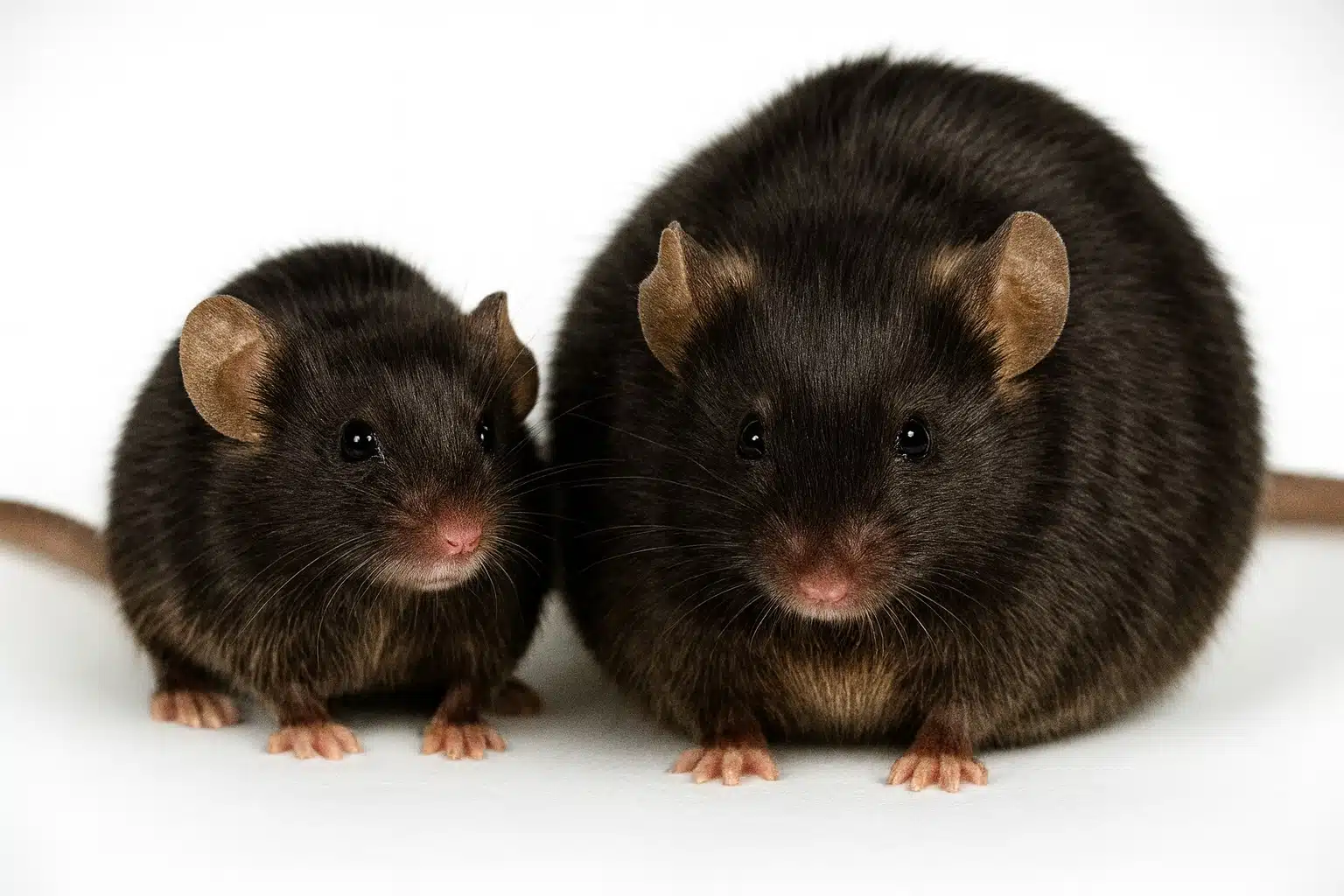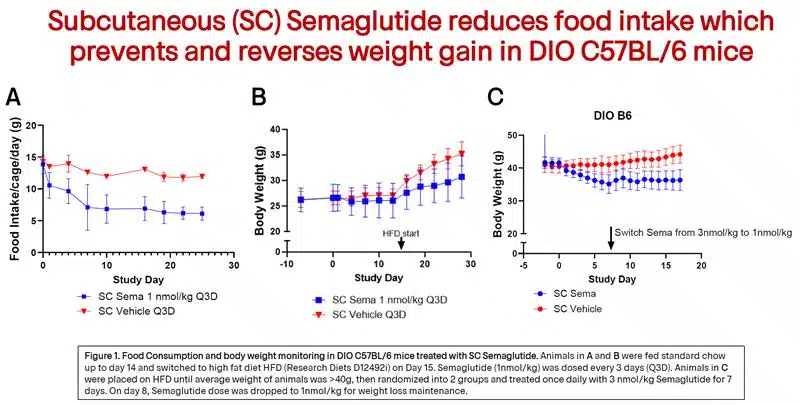
Our diet-induced obesity studies deliver clear and reproducible data on weight gain and downstream metabolic complications. Using commercially available mice already on high fat diet, we can ensure your study is initiated rapidly and effectively. With the current focus on GLP-1 comparators, our positive control data will demonstrate how your approach matches up with leading therapies and offers synergistic outcomes.
High-fat diet mouse models
Widely used for obesity research, these models demonstrate predictable weight gain, impaired glucose tolerance, and insulin resistance. Mouse models are ideal for quickly understanding the relevance of your lead candidates.
High-fat diet rat models
Rat models are ideal for long term studies, providing translational insights into weight regulation and metabolic health. Rat models are highly complimentary to mouse models as the current obesity epidemic is indeed longitudinal.
Preexisting DIO mice
Our preferred vendors are constantly stocked with animals on a high fat diet from 6 weeks of age. We can rapidly acquire mice of any weight and age range to ensure that your study is enrolled appropriately without the lead time of generating DIO mice from scratch.
Metabolic phenotyping
From simple testing such as glucose and insulin tolerance to complex analyses such as body composition by tissue weight, we can support a variety of mechanistic endpoints to further your research program. Food consumption measurements as well as emesis tracking allow you to understand how your compound drives results.
Histopathology
Adipose depot analysis sheds light onto the mechanisms of weight loss in addition to neurological and behavioral modification. Quantitation of lipid droplet number and size adds that extra layer of detail to your study. We can also study fibrosis and liver phenotypes as well.
Inflammation analysis
Adipokines, cytokines, and inflammatory mediators are readily accessible in our discovery lab. From multiplex profiling via bead arrays through single-plex standard ELISA, we can define how tissue-specific and overall inflammation is mediated.
Your Results Await

The DIO mouse model remains the gold standard for preclinical obesity research. When placed on a high-fat diet, animals develop obesity, insulin resistance, and glucose intolerance within weeks. In representative studies, treatment groups show improved glucose tolerance curves and attenuated body weight gain compared to controls.
Facilities and Animal Welfare

Our vivarium is USDA-certified and AAALAC accredited. Our IACUC supports rapid protocol review to initiate your study quickly and efficiently, while being sure to maintain animal welfare as highest priority.
Frequently Asked Questions
Answers to some of the most common questions about diet-induced obesity research service offerings.
We offer mouse and rat obesity models, along with additional exploratory options.
Yes. We can tailor diet composition, feeding duration, and endpoint selection to your study.
Commercially available DIO mice are obese where we order them! Typical age on delivery is 12 weeks after having been on high fat diet for 6 weeks. Weights average around 35-40g.
Weight, glucose and insulin tolerance, liver histology, cytokine panels, and lipid profiles are standard offerings. Most clients simply want weight data!